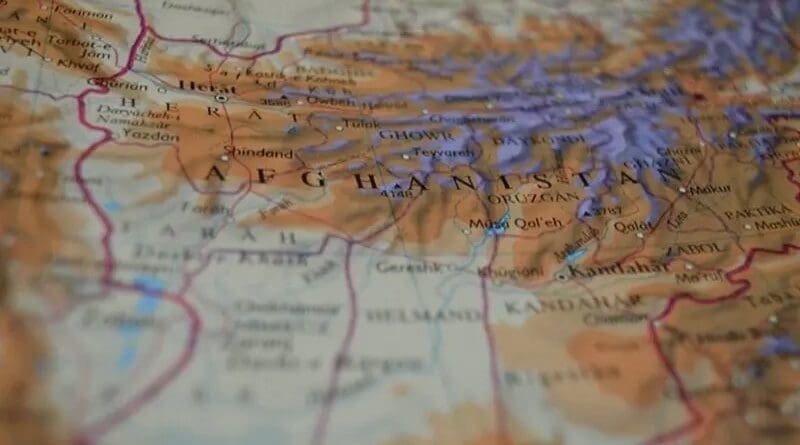Fighting The Taliban Was ‘Suicide’: Hundreds Of Afghan Soldiers Escape To Tajikistan
By RFE RL
By Golnaz Esfandiari and Mumin Ahmadi*
(RFE/RL) — Amid swift Taliban advances in northern Afghanistan, Mohammad Zaher felt that fleeing to neighboring Tajikistan was his only chance to survive.
Zaher — the head of a border communications unit in the Khwahan district of the northeastern province of Badakhshan — is among the hundreds of Afghan forces who have crossed the border into Tajikistan in search of safety since late June.
Afghan National Security Adviser Hamdullah Mohib said on July 6 that 2,300 Afghan personnel who fled to Tajikistan had rejoined the Afghan National Defense and Security Force (ANDSF). A Tajik security official told RFE/RL’s Tajik Service on July 7 that some 600 Afghan servicemen had been flown back to Afghanistan.
Zaher said resisting the Taliban was a losing battle as a large group from the local Public Uprising Forces had decided to join the militant group and fight pro-government troops. The forces — which include volunteers — fight under the umbrella of the government to help maintain security in different areas of the country.
Zaher added that the group had a significant amount of arms and ammunition.
“The Public Uprising Force seized government equipment and struck a deal with the Taliban. We no longer had the strength to resist and came to Tajikistan,” Zaher told RFE/RL.
Like Zaher, Afghan soldier Mohammad Vali said fighting the Taliban with little support was “suicide.” Therefore, he and his colleagues retreated across the Tajik border.
Zaher and Vali spoke to RFE/RL’s Tajik Service on July 5 from the city of Kulob. They are believed to have returned to Afghanistan.
But the fighting in Afghanistan could force more soldiers to retreat to Tajikistan and other neighboring countries, including Uzbekistan, where many have also already fled
Rapid Gains
Local officials in Badakhshan told Radio Azadi that 26 of the 28 districts in the northern province have fallen to the Taliban advance. Tajik officials have said the Taliban now controls 900 kilometers of the 1,357-kilometer border with Tajikistan.
The Taliban currently has control of more than half of Afghanistan’s 398 districts — most of those falling since U.S. and other international forces began their withdrawal from the war-torn country on May 1.
The extremist group’s rapid gains amid the near complete pullout of U.S. forces have created major concern in Afghanistan and neighboring countries, which fear an influx of refugees and potential instability.
“The retreat of military forces without a fight and the evacuation of Badakhshan [by government forces] has shocked people and confronts them with questions and doubt,” the Afghan daily Hashte Sobh wrote in a recent commentary, noting that many of Badakhshan’s districts had fallen like dominoes in a few days.
Some of the Taliban advances have been met without a major fight amid the retreat of some Afghan forces and the surrender of others. Afghan officials have said that, in some cases, the retreat of government forces was tactical.
On July 8, the Taliban captured Afghanistan’s main border crossing with Iran in the latest advance amid a series of attacks on government-controlled districts by the militia group, which has become emboldened as the result of the foreign forces’ withdrawal.
Some Afghan border guards and servicemen were even reported to have fled to Iran’s side of the border. Local officials said government forces in two districts in the western province of Herat had retreated to avoid civilian casualties.
Massouda Karokhi, a female member of the Afghan parliament, suggested that in some districts in the country servicemen feel that fighting the Taliban does not make sense.
“The soldiers there don’t have any support: they don’t receive food and are not provided with any facilities so they say ‘why should I sit here with nothing and fight the Taliban — it makes more sense for me to surrender my arms and go,'” Karokhi said in an interview with Noor TV.
Government Pushback
In some cases, Afghan forces have managed push the Taliban back and regain control of some districts. In Qala-e Naw, the capital of Badghis, officials told Radio Azadi on July 7 that government forces had repelled the Taliban after the militant group managed to enter the city and take control of some government buildings.
Enayat Najafizada, the founder and CEO of the Kabul-based Institute of War and Peace Studies, told RFE/RL that the withdrawal of U.S. forces has affected the morale of Afghan forces.
“Poor military leadership and bad governance at the local level are some of the factors behind the fall of the districts and army checkpoints,” he added.
“Nevertheless, in places where the [ANDSF] and the local uprising forces stood against the Taliban, not only did the Taliban fail to gain any territory, but its forces were also thoroughly defeated,” he said.
In some areas — particularly in the north — the Taliban has in the past worked with community elders in order to persuade soldiers to surrender and abandon their posts, Najafizada said, adding that in some cases the tactic had been affective.
“These community elders were challenging the Afghan forces by asking them: ‘Who are you fighting? Why are you defending people when you’re not getting paid on time?'”
Yet Najafizada believes that as the United States and NATO continue their military, political, and technical support to the Afghan government, it will be “in a very good position.”
Afghan President Ashraf Ghani admitted on July 8 that his country faced a difficult situation as U.S. troops depart the country. But he insisted that government forces could handle the challenge and withstand Taliban forces.
Written in Prague by Golnaz Esfandiari. With reporting by Radio Azadi.
- Golnaz Esfandiari is a senior correspondent with RFE/RL.[email protected] FOLLOW SUBSCRIBE VIA RSS
- Mumin Ahmadi is a correspondent for RFE/RL’s Tajik Service.

